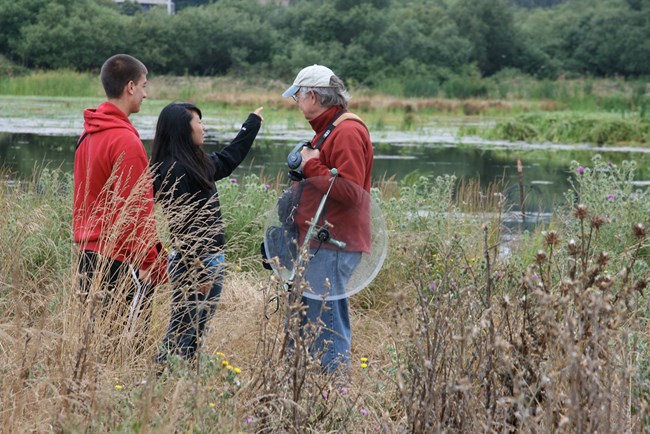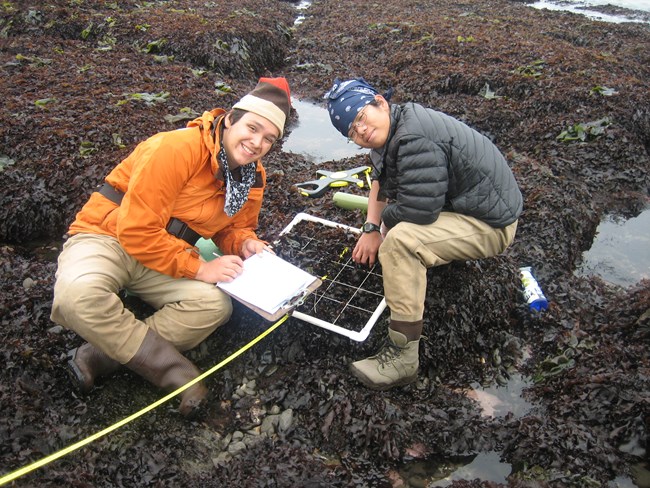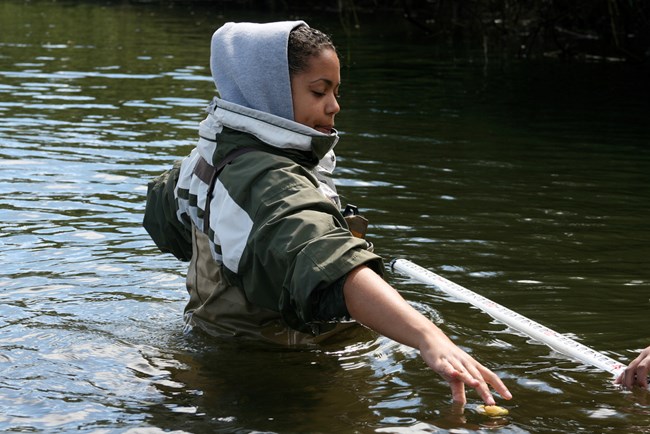|
Educating Youth about Oceans at Point Reyes National Seashore: Building Long-term Support for Ocean Stewardship 
NPS Photo / Jessica Luo This past summer, Point Reyes National Seashore hosted students from urban communities in the San Francisco Bay Area in two, 1–2 week marine science immersion programs. These intensive field seminars engage students in marine science, wetlands ecology, intertidal monitoring, cutting-edge research, and habitat restoration via hands-on, science-based field work with researchers and park biologists. The goal of this program is to teach students about the resource as well as the scientific methods that biologists and resource managers use to assess these natural resources. A total of twenty students from low to middle income families from Oakland, Alameda, San Francisco and Union City participated in this program, working in the park during the day and staying overnight at the Historic Life-saving Station at the Point Reyes Headlands. Students arrived at park fresh and wary about the immersion program, but ready to learn. They attended an orientation day with lectures and activities, and then jumped headfirst into a habitat restoration project with a park biologist, learning about the native ecosystems at the park. As they got used to living without their usual creature comforts of internet, online chatting, text messaging and cell phones, they eased into the program via single-day work with researchers and scientists at the Park studying rare thistles and mudflat communities. These scientists, usually graduate students or post-doctoral researchers, provided the students with a context of how their future education can be a vehicle for understanding and protecting the precious resources before them. As sparks lit up in their eyes and conversation started to deepen, these fifteen to eighteen year olds grumbled less about being away from home and started to really enjoy their time at the Park. 
NPS Photo / Jessica Luo We then moved on to increasingly involved projects, such as learning to monitor the intertidal zone at one of the most extensive and biologically abundant shale reefs in California, Duxbury Reef. But the highlight of their program was yet to come—exploring and studying a newly restored wetland by examining six different indicators over four days. The Giacomini Wetland Restoration Project is a $6.2 million, 550-acre restoration project that was completed in fall 2008, winning awards such as the DOI "Partners in Conservation" award, presented by Secretary Salazar. As the restored wetlands start to shift and change from pastureland, opportunities arise for educating students on the importance of wetlands, the effects of restoration, and the scientific methods that are used to measure the health of an ecosystem. 
NPS Photo / Jessica Luo The students who participated in this pilot Giacomini education program learned about the shifts in plant communities, water quality, and bird populations in Giacomini wetlands since the restoration. They also learned how to diagram cross-sections of streams, measure water flow, and conduct fish monitoring. Lastly, students also assisted with ongoing habitat restoration work in the new Giacomini wetlands by removing invasive plants that have started to colonize in the wetlands. The Pacific Coast Science and Learning Center, one of 17 national Research Learning Centers, organized and developed the curriculum for these immersion programs, and partnered with the Crissy Field Center of the Golden Gate National Parks Conservancy and the Oakland office of the Student Conservation Association to recruit the students and group leaders. The Point Reyes National Seashore Association assisted with raising funds from the California Coastal Commission as well as administering the grants received. |
Last updated: May 7, 2024
